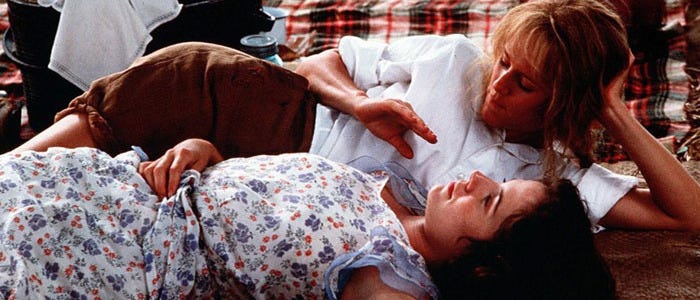
More than thirty years have passed since Fried Green Tomatoes first arrived in theaters, but few moments from the film remain as beloved—or as joyful—as the kitchen food fight between Idgie Threadgoode and Ruth Jamison. Played with infectious energy by Mary Stuart Masterson and Mary-Louise Parker, the scene has endured as a symbol of fun, intimacy, and the unbreakable bond between two women at the heart of the story.
A Moment of Spontaneous Joy
The famous scene was never meant to be polished or rehearsed. Instead, it was filmed in one chaotic, exhilarating take. Masterson and Parker worked with the prop department beforehand to choose their “weapons”—flour, vegetables, and an assortment of kitchen staples—but once the cameras started rolling, everything was improvised.
What resulted was a whirlwind of flying food and unrestrained laughter. The two actresses hurled their chosen ammunition at one another, slipping into a rhythm that felt more like play than performance. “It was just too much fun,” Masterson later said, recalling that the energy of that single take was enough to capture the scene forever.
More Than a Food Fight

On its surface, the scene is pure comedy, a burst of chaos in the middle of a Southern drama. Yet beneath the laughter lies something more profound. For Idgie and Ruth, the food fight embodies the freedom they found in each other—a chance to let go, to defy expectations, and to revel in the simple joy of being together.
For audiences, that spontaneity translated into authenticity. Their relationship, which had already grown into a deep and loyal friendship, shone through in a moment unscripted by dialogue but charged with emotion.
Why It Still Resonates
The food fight has since become one of the most talked-about moments in Fried Green Tomatoes, celebrated not just for its humor but for its symbolism. In a film that deals with themes of hardship, resilience, and loss, this brief explosion of laughter offered a reminder that joy is just as essential as survival.
It also demonstrated the chemistry between Masterson and Parker, whose on-screen connection gave the story its heart. Fans often cite the food fight as one of the clearest reflections of their characters’ bond—playful, trusting, and profoundly human.
A Legacy of Laughter
Cinema is full of carefully staged spectacles, but sometimes the simplest, most unplanned moments leave the deepest impression. Idgie and Ruth’s kitchen food fight, messy and unscripted, has lived on in the memory of audiences for decades.
What was once a playful interlude on a film set in 1991 has become an iconic symbol of friendship and freedom. Flour may have been swept from the café floor long ago, but the laughter lingers—proof that even the smallest acts of joy can leave a lasting mark on cinema history.
